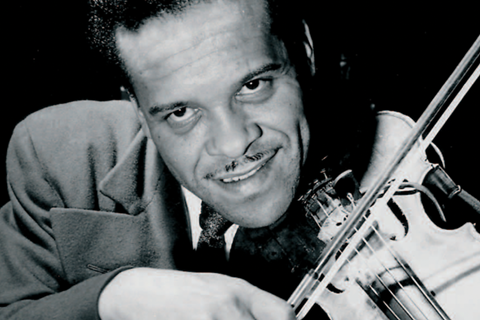Do you sound uninspired when you try alternative styles? How should you interpret the printed notes? Julie Lyonn Lieberman reads between the lines to bring life to your right hand

This month we’re concentrating on jazz and improvisation in our July 2021 issue, with a focus on jazz soloing on the double bass.
The following article from our archive was originally published in our April 2005 issue. To read the full article, click here.
BOW PLACEMENT
The physical properties of the bow are such that different effects can be elicited from its different parts. Jazz violinist Randy Sabien creates a swing feel at the tip of his bow; historic jazz violinist Stuff Smith made a gruff, horn-like sound quality at the frog; many Irish fiddlers tend to dwell three-quarters of the way up the bow; Scandinavian fiddlers often use a long sweeping motion; and bluegrass, Gypsy and Klezmer fiddlers have as many different techniques as classical players.
Bluegrass fiddler Richard Greene has adapted the popular comping (accompaniment) technique known as ‘chop technique’. Commonly used in bluegrass, it involves a simple pitchless landing at the middle of the bow to mark the second and fourth beats of the bar. Greene has developed complex rhythmic percussive patterns at the frog by using modulations in left-hand pressure and accentuating certain down- and up-beats within a harmonic phrase (with double-stops).
Read Technique: Jazz soloing on the double bass
Darol Anger and the Turtle Island Quartet have further developed this effect. Chop technique has helped string players expand from a melodic, soloistic role in the band to include a rhythmic role behind other instruments or string players as they play solos. To learn this technique, you will need to see it demonstrated (see Educational Materials box).
Teaching subtle variations about sound creation through the written word can at best only give you awareness of what to listen for: turn to the masters within each style for the application of this material.
Topics
Technique: Jazz soloing on the double bass
- 1
- 2
 Currently reading
Currently readingHow can I play jazz bowings on the violin?
- 3
- 4
- 5
- 6
- 7
- 8
- 9
- 10
- 11
- 12
- 13























































No comments yet